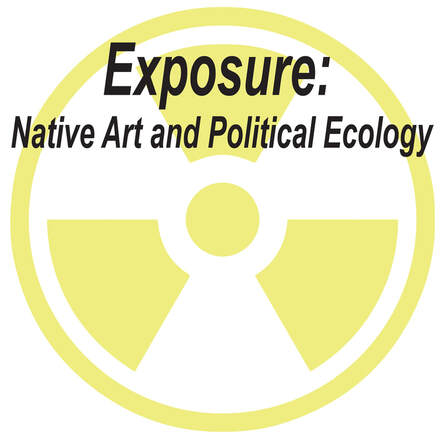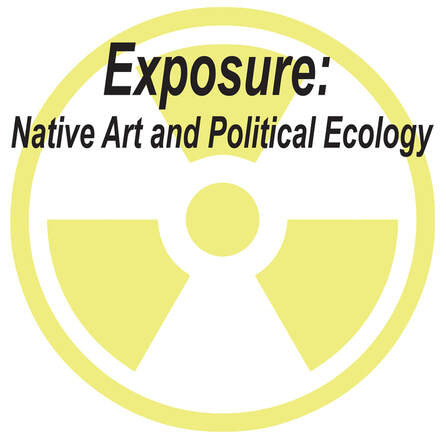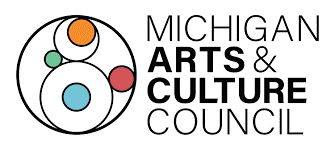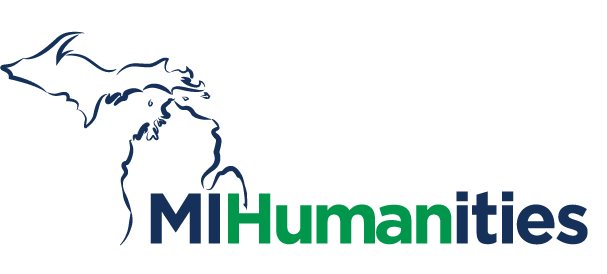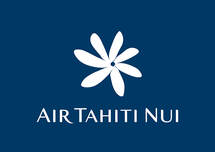Exposure: Native Art and Political Ecology
MUSEUM EXHIBITION DATES: September 10 - December 10, 2022
Exposure: Native Art and Political Ecology documents international Indigenous artists’ responses to the impacts of nuclear testing and uranium mining on Native peoples and the environment. The exhibition and publication give artists a voice to address the long-term
effects of these man-made disasters on Indigenous communities in the United States and around the world. There are over five hundred abandoned uranium mines and mills on Navajo Nation and Pueblo lands; and most of them are unmarked. Before 1962, Native American miners worked in the uranium mines without any protective equipment and live in houses constructed from contaminated material. Many of them have died as a result of uraniumrelated illness. Generations later, family members continue to suffer from cancer and birth defects resulting from uranium contamination.
Australia is the second largest uranium producing country in the world. The country’s atomic history began in the 1950s with twelve British major atomic bomb tests, followed by over 100 “minor” detonations. The contamination from the tests and uranium mines have poisoned Aboriginal people and the land: those who were exposed suffered from miscarriages, cancer, lung disease or died. In 1953, uranium was discovered near the Serpent River First Nations Reserve, Canada, in the heart of a sacred mountain. The tailings of the uranium mines have forever poisoned the Serpent River and its watershed. In 1945 Hiroshima and Nagasaki experienced the horrors of nuclear weapons for the first time in human history. In 2011 a tsunami caused a devastating nuclear disaster in the Fukushima Daiichi Nuclear Power Plant.
Because Greenland’s ice is melting rapidly, uranium deposits are more accessible than ever before. In 2013, Greenland’s parliament ended the zero tolerance policy for uranium mining. 88% of the population are Inuit. Many rely on fishing, hunting or farming for their livelihood, which could be jeopardized by toxic and radioactive waste from the proposed Kvanefjeld mine. Exposure to toxic uranium and nuclear poisoning is a serious issue for Indigenous communities worldwide. The exhibition and catalog examine the creative responses of international Indigenous artists to this deadly legacy. Are these artists creating art as a form of political protest? Do their works investigate and reveal the nuclear industries’ colonizing techniques? Do they use different strategies due to different circumstances in their countries?
Exposure: Native Art and Political Ecology is organized by IAIA Museum of Contemporary Native Arts, Santa Fe, NM
effects of these man-made disasters on Indigenous communities in the United States and around the world. There are over five hundred abandoned uranium mines and mills on Navajo Nation and Pueblo lands; and most of them are unmarked. Before 1962, Native American miners worked in the uranium mines without any protective equipment and live in houses constructed from contaminated material. Many of them have died as a result of uraniumrelated illness. Generations later, family members continue to suffer from cancer and birth defects resulting from uranium contamination.
Australia is the second largest uranium producing country in the world. The country’s atomic history began in the 1950s with twelve British major atomic bomb tests, followed by over 100 “minor” detonations. The contamination from the tests and uranium mines have poisoned Aboriginal people and the land: those who were exposed suffered from miscarriages, cancer, lung disease or died. In 1953, uranium was discovered near the Serpent River First Nations Reserve, Canada, in the heart of a sacred mountain. The tailings of the uranium mines have forever poisoned the Serpent River and its watershed. In 1945 Hiroshima and Nagasaki experienced the horrors of nuclear weapons for the first time in human history. In 2011 a tsunami caused a devastating nuclear disaster in the Fukushima Daiichi Nuclear Power Plant.
Because Greenland’s ice is melting rapidly, uranium deposits are more accessible than ever before. In 2013, Greenland’s parliament ended the zero tolerance policy for uranium mining. 88% of the population are Inuit. Many rely on fishing, hunting or farming for their livelihood, which could be jeopardized by toxic and radioactive waste from the proposed Kvanefjeld mine. Exposure to toxic uranium and nuclear poisoning is a serious issue for Indigenous communities worldwide. The exhibition and catalog examine the creative responses of international Indigenous artists to this deadly legacy. Are these artists creating art as a form of political protest? Do their works investigate and reveal the nuclear industries’ colonizing techniques? Do they use different strategies due to different circumstances in their countries?
Exposure: Native Art and Political Ecology is organized by IAIA Museum of Contemporary Native Arts, Santa Fe, NM
This exhibition is Supported by:
“Exposure: Native Art and Political Ecology” is organized by IAIA Museum of Contemporary Native Arts, Santa Fe, NM. Support for this exhibition is provided by Ford Foundation, Andy Warhol Foundation for the Visual Arts, and by Air Tahiti Nui as well as the Maxwell K. Pribil Trust administered by Huntington.

